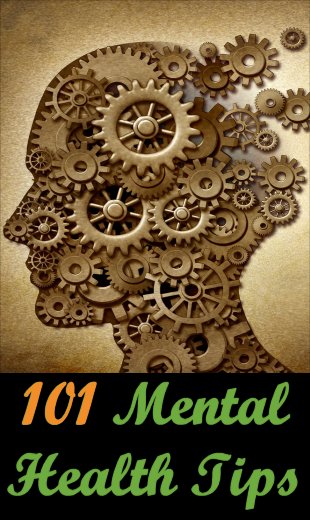15 Ways To Tackle Your ADHD Without Medication
If you or your child is diagnosed with attention deficit hyperactivity disorder (ADHD), there is a good chance your doctor will try to prescribe some form of medication, including:
- Adderall (which is chemically very similar to meth – something your doctor probably won’t tell you)
- Desoxyn
- Evekeo
- Intuniv
- Kapvay
- Mydayis
- Ritalin
- Strattera
However, all prescription drugs come with a long list of potential side-effects. For example, Ritalin lists blood in the urine or stools, blurred vision, confusion, depression, fever, hives, joint pain, and seizures, amongst many others.
The good news is that there are natural alternatives you can try to tackle your ADHD, and this article details a few of them.
Ask For A Second Opinion
I’m listing this one first because misdiagnosis is common when it comes to ADHD – so you (or your child) may not have ADHD after all.
For example, the following can also create symptoms that mirror those of ADHD:
- anxiety, especially generalized anxiety, separation anxiety, and social anxiety
- depression, because depression and ADHD can both result in changes in eating and sleeping habits, as well as trouble concentrating and focusing, and a lack of motivation
- learning difficulties, such as failing to finish tasks, a lack of organization, and not listening
- problems with hearing and vision
Getting a second opinion may lead to a different diagnosis, which means the treatment protocols may be radically different. (Medical error is now reckoned to be the third leading cause of death in the USA.)
Avoid Food Additives
Some food additives, including both colourings and preservatives, have long been associated with a suspected increase in hyperactivity.
In other parts of the world, such as the European Union, where standards tend to be stricter than they are in the US, any food that contains certain food additives must include the following warning: “The product may have an adverse effect on activity and attention in children.”
There are additives that are allowed in the USA that have been banned in other countries, for example. And as shocking as it may seem, there are literally thousands of food additives that are regularly used in the USA that have never been safety-tested.
Here are some of the additives that are thought to increase symptoms of ADHD:
- D&C Yellow No. 10 (quinoline yellow), which is found in haddock, juices, and sorbets.
- FD&C Yellow No. 5 (tartrazine), which is found in cereal, granola bars, pickles, and yoghourt.
- FD&C Yellow No. 6 (sunset yellow), which is found in breadcrumbs, candy, cereal, icing, and soft drinks.
- FD&C Red No. 40 (Allura red), which is found in medications for children, gelatin-containing desserts, ice cream, and soft drinks.
- Sodium Benzoate, which is found in carbonated drinks, fruit juices, and salad dressings.
Note that the above list of where you’ll find these additives is only a small sample – these colourings and preservatives are far more prevalent than shown here.
You therefore need to read food labels a lot more closely, because manufacturers will often try to sneak these additives in, even when you wouldn’t imagine the product would need them.
Biofeedback
Biofeedback monitors became a bit of a trendy thing several decades ago, but when used correctly, specific types of biofeedback, such as electroencephalographic (EEG), have been used to identify and then adjust thinking patterns and behaviours.
Research has shown that people with ADHD have both an unusually low level of activity in the cortical regions of the brain, and an elevated state of arousal in the frontal cortex.
And it is believed that these two factors play a part in ADHD symptoms.
One meta-analysis showed that children diagnosed with ADHD demonstrated consistently beneficial effects from EEG biofeedback.
EEG biofeedback treatment sessions are usually required for two to three months, with each session lasting for half an hour to an hour.
Brain Training Software
You can obtain programs (e.g. software or apps) that can help train your brain to improve your memory (especially your working memory), increase attention, and reduce impulsivity.
This software is often presented as a game, but a game that is designed not only to be fun but also to exercise your brain in a way that helps it work better, which can then reduce some symptoms of ADHD.
Cognitive Behavioural Therapy (CBT)
“Originally a treatment for mood disorders, CBT is based on the recognition that cognitions, or automatic thoughts, lead to emotional difficulties. Automatic thoughts are spontaneous interpretations of events. These impressions are susceptible to distortion, such as unfounded assumptions about yourself (or others), a situation, or the future. An unhealthy internal dialog could prevent an individual from working toward an aggressive goal, working to develop productive new habits, or generally take calculated risks.” (additudemag.com)
So, when used to treat ADHD, CBT’s goal is to replace negative thought patterns that inhibit your ability to concentrate and get things done.
Both clinical studies and research demonstrate that CBT offers genuine benefits for people with ADHD.
Hopefully, your doctor should recommend this option to you (or for your children) as a matter of course, but if not, you should ask about it.
Cut Down On Screen Time
This applies both to watching television and using their computer, smartphone or tablet.
Some studies have concluded that texting, or playing video games, can in fact increase impulsive tendencies as well as their need for constant stimulation and instant gratification.
While it will seem a bit harsh and restrictive to children these days (and some adults), a limit of 75 minutes per day is recommended.
Eat Plenty Of Protein
Proteins, which are built from amino acids, can stabilize your blood sugar levels, which in turn can keep a check on hyperactivity.
Consuming proteins can also raise your tyrosine levels, and tyrosine is used by your body to manufacture both dopamine and norepinephrine, which are neurotransmitters that can promote activity and alertness.
Contrast that with eating carbohydrates, which increases tryptophan levels in your brain, and that creates a feeling of sleepiness.
Exercise
As you may have read elsewhere on this site, exercise is so important for our health – both physical and mental.
So it should come as no surprise to learn that it can help with ADHD too.
Several studies have shown that exercise may help reduce the lack of attention and the increased activity levels that are typical of ADHD, as well as helping calm the person down
Aerobic exercise is recommended as the best option, although other options such as martial arts (e.g. aikido, judo, karate), strength training, or team-based sports, can also be beneficial.
Exercising for four or five days a week, with each work-out lasting between half and hour and three quarters of an hour, should be enough to show improvements in ADHD symptoms.
Find A Nutritionist
In other parts of the world (e.g. France), doctors consider diet as one reason for changes in behaviour, whereas in the USA, doctors have little training on the importance of diet and nutrition.
Finding a good, qualified nutritionist to work with you or your child can help tremendously – by eliminating ingredients that are detrimental to ADHD (e.g. refined sugars and processed flours), and adding ingredients that can help.
For example, a study performed in Europe showed that 70% of children with ADD (which is very similar to ADHD) showed a greater than 50% reduction in their symptoms when put on an elimination diet.
Get Plenty Of Sleep
More and more research is showing that getting enough sleep is crucial to overall well-being, and guess what – most Americans are not sleeping nearly long enough.
Having enough high-quality sleep (about seven hours) can help you feel alert the next day, more focused, and more active.
Meditation And/Or Mindfulness
Both of these practices have a tremendous range of benefits, both physical and mental, which means they are great for those with ADHD too.
For example, they can calm you down and help you focus better.
You’ll find several articles that go deeper into this topic right here on Self Help Nirvana.
Nutritional Supplements
A common alternative to prescription drugs are supplements.
When taken as directed, and assuming you buy a high-quality product (i.e. clean sources, with a minimum of inactive ingredients), they typically have far fewer side-effects than regular medications.
Some of the supplements that can help with ADHD include:
- iron
- l-carnitine
- magnesium (which is something the majority of Americans are deficient in)
- omega-3 fatty acids
- vitamin B6
- vitamin C
- zinc
You could also try a few herbs, such as:
- bacopa (aka brahmi)
- ginkgo biloba
- ginseng
- goto kola
- guarana
- passionflower
These are also often available as herbal infusions, if you’d rather drink a soothing tea than pop a few pills.
Of course, if you are taking any other medications, please check with your doctor in case there might be any interactions, and if the supplements are for a child, it is worth getting their blood tested first so you can establish their baseline nutrient levels.
Reduce Stress
I realize this is often easier said than done, but when you are stressed, your dopamine levels drop, which can then create feelings of lethargy and an inability to concentrate or focus.
There are two other things that can deplete your dopamine levels, which are more relevant to adults than children – alcohol, and caffeine. So try to eliminate or, at least, reduce your intake of these two substances if possible.
Spend Time In Nature
Research suggests that spending as little as 20 minutes a day outside, in nature, can help improve symptoms of ADHD – by helping children recover from the after-effects of a long day at school (i.e. attention fatigue).
Possible activities include:
- bird watching
- cycling
- gardening
- swimming (in an outdoor pool, of course)
- walking (e.g. in the park, along a river bank, in the woods or a forest)
- yoga (which can be done indoors or outdoors)
And being outside in nature will help with the next item on this list too…
Sunshine
Getting outside in natural daylight is the best way to increase your vitamin D levels.
Vitamin D is now known to be a natural way to boost your mood, protect neurons, and reduce brain inflammation.
Being deficient in vitamin D has also been associated with dementia (and other cognitive impairment problems), as well as memory loss.
In fact, one study found that the people with the lowest levels of vitamin D have double the risk of some type of cognitive impairment.
So, get out there in the sun (but make sure you double-check how long you need, based on your location and various other factors), and if that’s not possible, vitamin D supplements are available (Vitamin D3 is generally accepted as being better than D2), even though they’re not as beneficial.
And if getting outside in the sunlight is genuinely difficult for you, for whatever reason, then you can consider using a light therapy box, which simulates natural daylight.
Conclusion
My initial preference is always to avoid prescription drugs, largely because of the potential side-effects, which can often be worse than what they’re meant to treat, which is why I wanted to put the above list together.
I hope you’ll agree that there are plenty of safe options here, any of which may reduce symptoms of ADHD. Some, of course, do require you to discuss the matter with your doctor (assuming they are even aware of some of this information), while others you can easily do all by yourself with no adverse effects to worry about.
Additional Resources
These are suggestions for those who wish to delve deeper into any of the above:







